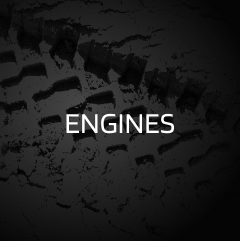 CCA Spares
CCA Spares
Exhaust Systems – Channeling the Residual Power
Continuing our exploration of internal combustion engines, our focus now turns to a crucial component that deals with the aftermath of combustion: the exhaust system. Join us as we unravel the functions, components, and significance of exhaust systems in managing and expelling the byproducts of combustion.
Functions of the Exhaust System:
Explore the primary functions of the exhaust system:
- Gas Expulsion: The exhaust system expels combustion byproducts, including carbon dioxide, water vapor, and nitrogen oxides, from the engine.
- Noise Reduction: The exhaust system includes components that help reduce the noise generated during the combustion process.
- Emission Control: Catalytic converters, a key part of the exhaust system, play a crucial role in reducing harmful emissions.
Components of Exhaust Systems:
Dive into the key components that make up an exhaust system:
- Exhaust Manifold: The manifold collects exhaust gases from the engine’s cylinders and channels them into a single pipe.
- Catalytic Converter: This component contains catalysts that facilitate chemical reactions to reduce harmful emissions.
- Muffler: The muffler dampens exhaust noise through sound-canceling technologies.
- Resonator: Resonators further reduce noise by canceling out specific frequencies.
- Tailpipe: The tailpipe expels the treated exhaust gases to the atmosphere.
Catalytic Converters and Emission Control:
Explore the role of catalytic converters in emission control. Learn how they facilitate the conversion of harmful gases into less harmful substances, contributing to environmental protection.
Exhaust System Materials:
Exhaust systems are subject to high temperatures and corrosive gases. Delve into the materials commonly used, including stainless steel and aluminized steel, and understand their resistance to heat and corrosion.
Performance Exhaust Systems:
In the realm of high-performance vehicles, aftermarket exhaust systems are popular for their ability to enhance engine performance and produce a distinctive exhaust note. Explore performance-oriented exhaust technologies, including headers and free-flowing mufflers.
Exhaust System Design Variations:
Different engine configurations and vehicle types necessitate varied exhaust system designs. From single exhaust systems to dual exhaust setups, understand how design variations impact performance and aesthetics.
Exhaust Gas Recirculation (EGR) Systems:
EGR systems are employed to recirculate a portion of exhaust gases back into the engine cylinders. Explore the purpose of EGR systems in controlling combustion temperatures and reducing nitrogen oxide emissions.
Maintenance of Exhaust Systems:
Proper maintenance is essential for the longevity and efficiency of exhaust systems. Learn about routine inspections, addressing leaks, and replacing worn-out components to ensure optimal performance.
Environmental Considerations:
Environmental regulations drive advancements in exhaust system technologies. Explore how manufacturers are developing systems to meet stringent emission standards and contribute to cleaner air.
In conclusion, the exhaust system plays a vital role in managing the byproducts of combustion and ensuring environmental compliance. This article has provided a comprehensive exploration of its functions, components, and significance in the overall performance of internal combustion engines. Stay tuned for the next installment as we continue our journey through the intricate components of internal combustion engines.

